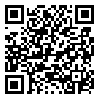Volume 11, Issue 2 (Spring--In Press 2025)
JCCNC 2025, 11(2): 0-0 |
Back to browse issues page
Download citation:
BibTeX | RIS | EndNote | Medlars | ProCite | Reference Manager | RefWorks
Send citation to:



BibTeX | RIS | EndNote | Medlars | ProCite | Reference Manager | RefWorks
Send citation to:
Abdulkhaled S A J, Pangandaman H. Association Between Computer Literacy and Utilization of Health Information Technology in Nursing Documentation and Plan of Care among Staff Nurses in a Tertiary Hospital. JCCNC 2025; 11 (2)
URL: http://jccnc.iums.ac.ir/article-1-653-en.html
URL: http://jccnc.iums.ac.ir/article-1-653-en.html
1- Mindanao State University, Marawi, Lanao Del Sur, 9700, Philippines.
2- Mindanao State University, Marawi, Lanao Del Sur, 9700, Philippines. ,hamdoni.pangandaman@msumain.edu.ph
2- Mindanao State University, Marawi, Lanao Del Sur, 9700, Philippines. ,
Abstract: (566 Views)
Background: The integration of Health Information Technology (HIT) in healthcare is essential for enhancing the quality, efficiency, and safety of patient care, particularly in nursing documentation and care planning. Effective use of HIT requires a strong foundation in computer literacy, yet the impact of computer literacy on HIT utilization in nursing remains underexplored.
This study aims to examine the association between computer literacy and the utilization of HIT in nursing documentation and care planning among staff nurses in a tertiary hospital. It seeks to determine whether higher levels of computer literacy correlate with more effective use of HIT, potentially informing future training programs.
Methods: A descriptive correlational design was employed, focusing on staff nurses at a tertiary hospital in Lanao del Sur, Philippines, in 2023. A total of 128 nurses, selected through simple random sampling, participated in the study. Data were collected using a structured researcher-made instrument that assessed computer literacy and HIT utilization. The analysis included descriptive statistics such as frequencies, percentage distributions, means, and standard deviations, along with inferential statistics, specifically Pearson's r correlation coefficient, conducted using SPSS version 25 at 0.05 level of significance.
Results: The study found that nurses exhibited high proficiency in basic computer skills, particularly in Microsoft Word (85%) and basic concepts (78%), but lower proficiency in troubleshooting and Microsoft PowerPoint. Significant positive correlations were found between computer literacy and HIT utilization for documentation in terms of Basic Concepts (r = .901; p = .027), Microsoft Word (r = .919; p = .026), Microsoft Excel (r = .912; p = .038), Microsoft PowerPoint (r = .908; p = .034), and Basic Troubleshooting (r = .895; p = .036). However, no significant correlations were observed between computer literacy and HIT utilization for care planning, with Basic Concepts, Microsoft Word, Microsoft Excel, Microsoft PowerPoint, and Basic Troubleshooting (p > 0.05).
Conclusion: Computer literacy plays a critical role in the effective utilization of HIT for nursing documentation, but its influence on care planning is less pronounced. The findings suggest that targeted training programs should focus on enhancing both basic and advanced computer skills to optimize HIT utilization, ultimately improving patient care outcomes in the digital age.
This study aims to examine the association between computer literacy and the utilization of HIT in nursing documentation and care planning among staff nurses in a tertiary hospital. It seeks to determine whether higher levels of computer literacy correlate with more effective use of HIT, potentially informing future training programs.
Methods: A descriptive correlational design was employed, focusing on staff nurses at a tertiary hospital in Lanao del Sur, Philippines, in 2023. A total of 128 nurses, selected through simple random sampling, participated in the study. Data were collected using a structured researcher-made instrument that assessed computer literacy and HIT utilization. The analysis included descriptive statistics such as frequencies, percentage distributions, means, and standard deviations, along with inferential statistics, specifically Pearson's r correlation coefficient, conducted using SPSS version 25 at 0.05 level of significance.
Results: The study found that nurses exhibited high proficiency in basic computer skills, particularly in Microsoft Word (85%) and basic concepts (78%), but lower proficiency in troubleshooting and Microsoft PowerPoint. Significant positive correlations were found between computer literacy and HIT utilization for documentation in terms of Basic Concepts (r = .901; p = .027), Microsoft Word (r = .919; p = .026), Microsoft Excel (r = .912; p = .038), Microsoft PowerPoint (r = .908; p = .034), and Basic Troubleshooting (r = .895; p = .036). However, no significant correlations were observed between computer literacy and HIT utilization for care planning, with Basic Concepts, Microsoft Word, Microsoft Excel, Microsoft PowerPoint, and Basic Troubleshooting (p > 0.05).
Conclusion: Computer literacy plays a critical role in the effective utilization of HIT for nursing documentation, but its influence on care planning is less pronounced. The findings suggest that targeted training programs should focus on enhancing both basic and advanced computer skills to optimize HIT utilization, ultimately improving patient care outcomes in the digital age.
Keywords: Computer Literacy, Health Information Technology, Nursing Informatics, Nursing documentation, Care Planning
Type of Study: Research |
Subject:
General
Received: 2024/08/15 | Accepted: 2024/12/2 | Published: 2025/04/30
Received: 2024/08/15 | Accepted: 2024/12/2 | Published: 2025/04/30
Send email to the article author
| Rights and permissions | |
 |
This work is licensed under a Creative Commons Attribution-NonCommercial 4.0 International License. |




